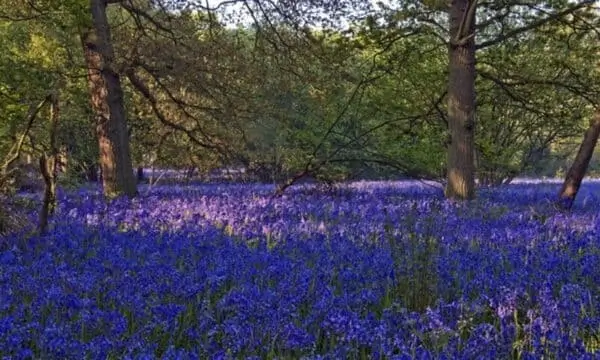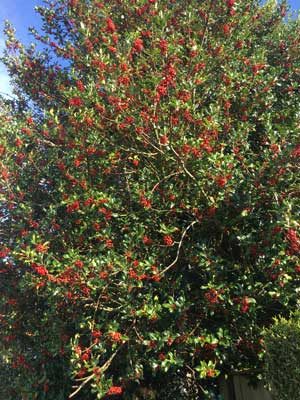 Glorious Weather for Autumn Fruits Walk
Glorious Weather for Autumn Fruits Walk
Steve Hallam reports that this year’s Autumn Fruits walk had two noteworthy characteristics. Firstly, it was blessed with the most glorious weather – wall to wall sunshine and windless. Secondly, this was one of those years in which the title should have been ‘Autumn fruits and flowers’.
Inconsistent Nature
I have commented before on how this walk consistently defies my initial, naïve, expectations that we would see the same things in each year (berries and nuts grow on trees and shrubs, and they don’t run or fly away). Nature, it transpires, is not so straightforward as this – and this season has hardly been ‘typical’. Nine people participated in the walk, which included some who had been on it before. This was a bit worrying, as I only had old jokes!
The area around the old church is usually and reliably ‘fruitful’, and so it was this year. The short length of Holly hedge had more berries than normal (in general, it appears to be a good year for Holly berries), while the Yews in the graveyard were also well covered. Most gratifyingly, while I was explaining that the late-flowering Ivy is a very important source of nectar, after everything else has finished, we saw that the ‘wall’ of Ivy we were looking at was literally humming with insect activity. Most helpful.
Trick Question
Further down the track, under some Oaks, I challenged the group to guess what was noteworthy about where we stood. It was, of course, a ‘trick question’ which, luckily for me, no one got the answer to. This was the complete absence of acorns under our feet – there should have been thousands of them.
I hear you say why? The Oak’s propagation strategy is to put energy into producing a super-abundance of acorns in some years; it then recovers by producing none in others. Their distribution process is to get Jays, Squirrels etc. to carry the acorns away and bury them. Producing very many acorns in one year increases the likelihood that some will get forgotten and thus allowed to germinate.
Goldilocks Year
The plum and apple trees we passed next also appeared to have had a ‘rest’ year, with no fruit to see. At least there were some hips and haws, which have had a ‘Goldilocks’ year – not too many, but not too few. The young lad who had been brought along by his Mum was, I think, interested to hear about how hips are a useful source of itching powder. Many flowers covered the track verges – Black Horehound, Yarrow, various members of the daisy family, and Knapweed.
At the bottom of the field that runs along the side of the wood towards the stream, the Hop plant put on a fine display of fruits this year. The Sloes in the various hedgerows have had a good year, with abundant displays. Across the stream, I was again able to find just a few of the bright and shiny red berries of Woody nightshade. They were hidden deep within a bramble thicket, arguably the best place for them, bearing in mind how poisonous they can be.
We were also able to find a few of the lovely pink Spindle tree berries, but no Dogwood berries. This hedge is kept well flailed by the farmer – good for efficiency, but less so for autumn fruits! The Guelder Rose shrubs tucked safely away by the stream were also not as impressive as in some years.
 And so into the woods
And so into the woods
Moving on into the wood, I was able to find quite a nice display of Black bryony interlaced with bramble, but no Honeysuckle, White bryony or Lords and Ladies berries. At least there are always some Sweet Chestnuts. As we exited the wood, we were able to enjoy, in the sunshine, the superb view down the Colne Valley.
As I mentioned at the beginning, this year’s walk should arguably have referred to autumn flowers in its title. For the second time since I started doing this walk, the track margins on the way back to the old church were full of late flowers; mainly of specialists in growing on bare earth. There were hundreds of Black nightshade plants, Scarlet pimpernel, colonies of Sun spurge, Groundsel, Fat-hen, Speedwell, Wild pansies, thistles, Mallow and Pineapple weed. This will be a good place to look out for seed-eating birds, later in the winter. All in all, another productive walk, just not quite what I was expecting!
Steve Hallam.




